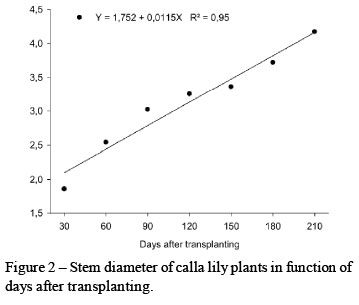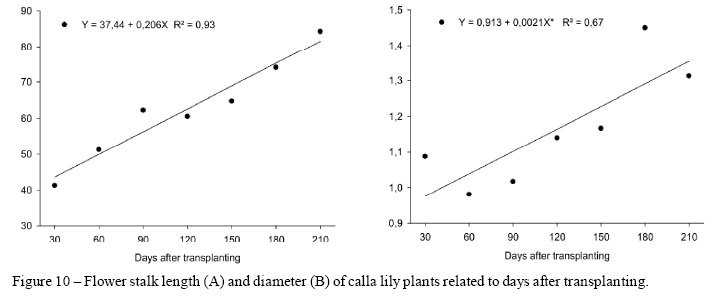The cultivation of the calla lily, despite its importance in the floriculture sector, is still limited due to the lack of knowledge of basic production techniques such as development and dry mass accumulation. These techniques facilitate more appropriate management, especially regarding the application of fertilizers, providing better nutrients utilization and greater yields. Thus, this study was aimed at evaluating the growth and development of calla lily plants, establishing growth curves according to dry mass accumulation. Acclimatized and micropropagated calla lily plantlets were grown in plastic pots containing coconut fiber as a substrate and fertilized with a modified formula of Malavolta. Treatments consisted of assessments at intervals of 30 days for 7 months. The design was in randomized blocks with four replications, in a total of 28 plots. Plants were evaluated by observing their growth characteristics and development of shoots, rhizome, roots, as well as production and flower quality. Development of the plants increased throughout the experimental period, with the maximum dry mass accumulation occurring at the end of the experimental period. Blooming was constant with the length of flower stalks increasing with along with the age of the plant.
Zantedeschia aethiopica; floriculture; growth; production













